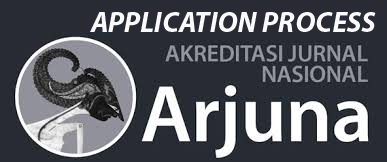Linguistic Sexism On The Portrayal Of Female And Male Celebrities In News Coverage
DOI:
https://doi.org/10.58684/jarvic.v3i2.145Keywords:
celebrities, digital news, feminist stylistic, love affair, sexismAbstract
News articles always play a vital role, it has a broad impact and is gradually becoming a part of daily life. Celebrity lifestyle also draws attention and quite eager to be read, and this paper aims to investigate the expression of linguistic sexism against female celebrities in the various news media. Adopting a feminist stylistic within word level and discourse level, this paper attempt to analyze 22 written news. The selected features at the word level include transitivity which requires naming categories and material actor versus material goal. While the discourse level include modality and passivization. It reveals that linguistic sexism is present in celebrity news coverage, with several subtle forms of sexism.
References
Atir, S., & Ferguson, M. J. (2018). How gender determines the way we speak about professionals. Proceedings of the National Academy of Sciences of the United States of America, 115(28), 7278–7283. https://doi.org/10.1073/pnas.1805284115
Chen, Z. (2016). Critical discourse analysis of sexism in English language. In Proceedings of 2016 2nd International Conference on Humanities and Social Science Research (ICHSSR 2016) (pp. 79-83). Singapore. https://doi.org/10.2991/ichssr-16.2016.79
Dai, H., & Xu, X. (2014). Sexism in news: A comparative study on the portrayal of female and male politicians in The New York Times. Open Journal of Modern Linguistics, 4(5), 709–719. https://doi.org/10.4236/ojml.2014.45061
Hammarqvist Kristensen, J. (2019). Linguistic sexism in a digitally native news outlet: A study on linguistic sexism at lexical and discourse levels in Buzzfeed News. Procedia - Social and Behavioral Sciences, 93, 8–16. https://doi.org/10.1016/j.sbspro.2013.08.420
Jotform. (n.d.). Data collection methods. Retrieved May 27, 2022, from https://www.jotform.com/data-collection-methods/
Linda, B. G. (2018). When last comes first: The gender bias of names. Retrieved from https://news.cornell.edu/stories/2018/07/when-last-comes-first-gender-bias-names
Rao, P., & Taboada, M. (2021). Gender bias in the news: A scalable topic modeling and visualization framework. Frontiers in Artificial Intelligence, 4. https://doi.org/10.3389/frai.2021.66473
Sainz-de-Baranda, C., Adá-Lameiras, A., & Blanco-Ruiz, M. (2020). Gender differences in sports news coverage on Twitter. International Journal of Environmental Research and Public Health, 17(14), 5199. https://doi.org/10.3390/ijerph17145199
Williams, S. J. (2014). A feminist guide to cooking. Contexts, 13(3), 59–61. https://doi.org/10.1177/1536504214545763















